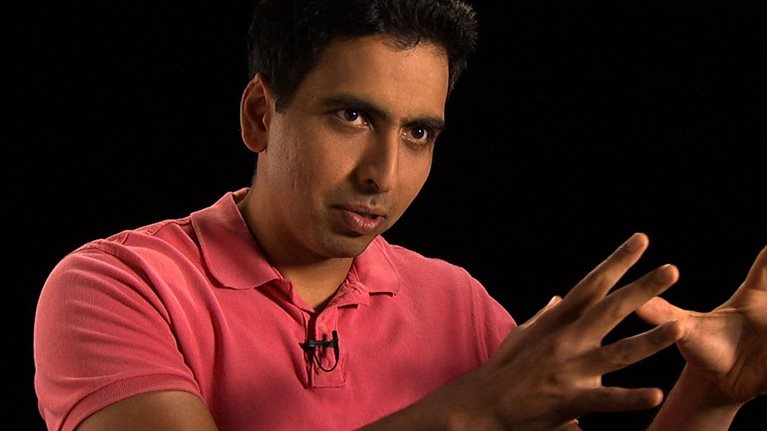Elite colleges from Mexico to Morocco prepare intelligent and driven graduates to become future leaders. So here’s a pop quiz: which country’s universities are most likely to attract high-flying women to the STEM fields: science, technology, engineering, and mathematics? If you answered “those in the United States,” think again. Just 4 percent of US women identified as high performers study STEM subjects, according to a McKinsey survey.1 In fact, the country ranks last of the nine we examined, and it’s not even close. In India, 57 percent of high-performing women study STEM subjects. In Morocco, it’s 37 percent and in Turkey 25 percent. Brazil, Germany, Mexico, Saudi Arabia, and the United Kingdom all rank higher than the United States.
What’s going on? One popular theory is that men are simply more drawn to STEM subjects, just as women are more likely to get a degree in, say, early-childhood education. Fair enough, but that does not explain the entire gap—and doesn’t appear to be entirely accurate, at least among high-school students. Some 55 percent of girls 15 to 18 years old say they find engineering attractive, compared with 54 percent of boys. Indeed, US high-school girls take almost half of the Advanced Placement tests in math and science and have higher average grades in both subjects.2
The turning point appears to be college. According to our survey, at this point young women become less interested in the STEM fields and young men more interested in them. By the age of 23 to 25, the disparity is sizable: only 46 percent of women are attracted to engineering, for example, compared with 62 percent of men.
This difference in ambition isn’t driven by a lack of skills: even women at the highest end of the achievement spectrum are less likely than their male peers to pursue STEM subjects.3 In fact, government data show that while many women could have excelled in these fields, they chose not to enter them—and may believe they will excel even more in other fields.
Now, it’s important to remember that American women are much more likely to go to university (or to high school, for that matter) than their Moroccan or Indian counterparts. On the whole, the Americans are more integrated into the economy and enjoy longer careers. But it is also fair to say that other countries do a much better job of getting more high-potential women to pursue STEM studies.
Part of this difference could be structural. American women may see reasonable economic opportunities in a wide array of non-STEM fields, such as business or nursing or law. They may also be more confident that they can study the liberal arts and still get good jobs. Smart, ambitious young women in less-developed economies (and their families), by contrast, may prefer to concentrate on pathways that present a better-understood future. That means majoring in STEM instead of, say, literature.
In addition, in many countries, high-stakes exam systems steer students toward STEM. India, Morocco, and Turkey, for example, have secondary-school finishing exams that use the performance of graduates to route them to universities and degree programs. For the most part, those students who perform best are funneled to the sciences and engineering. That practice, in turn, feeds social perceptions of the prestige of related professions. The United States won’t want to emulate this system but certainly can do more to work on the nonstructural factors that contribute to such glaring underrepresentation of women.

Education to employment: Designing a system that works
The first step is understanding the psychological determinants of success in math and science. Carol Dweck, a Stanford University psychologist, has undertaken research showing that high-performing women who think success in math and science is rooted in innate intelligence are less likely to persist when confronted with difficult or confusing new concepts. But women who believe success comes through effort embrace this challenge and perform at levels equal to or above those of their male counterparts. The net result is that parents and teachers who praise effort and persistence (“you work so hard”) as opposed to results (“you are so smart”) can cultivate a mind-set that fosters greater coping skills in the face of initial struggles.
Second, societal bias and the attitudes of women themselves make the challenge tougher. While stereotypes persist among both sexes, sociologist Dr. Shelley Correll has found that even when girls have levels of previous achievement in math similar to those of boys, girls rate their own abilities lower. Further, women set themselves a higher bar for determining proficiency—and are often held to a different standard.4 Interventions that create transparent performance criteria and help girls assess their own skills correctly are critical. As one study put it, when “performance is ambiguous, people view women as less competent than men in STEM fields.”5
Finally, employers have a major role to play. In the United States, our survey finds, women STEM graduates are 25 percent more likely than male ones to be unemployed; our survey also shows that they receive much less on-the-job training than their male counterparts do. Industry participants should address these barriers by actively recruiting women students, investing in their development, and providing opportunities for mentorship. Doing so is not mere do-gooding; it’s a hardheaded decision to deepen the talent pool and ensure that smart and talented women can rise as high as their ambitions and abilities will take them. That benefits everyone.


